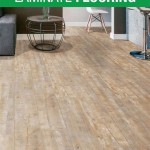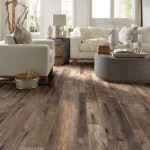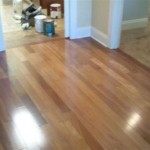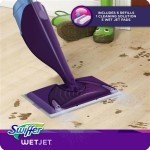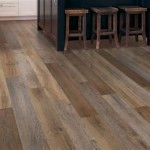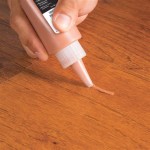How To Make Homemade Hardwood Floor Cleaner
Maintaining the beauty and longevity of hardwood floors requires consistent and proper cleaning. While numerous commercial floor cleaners are available, many contain harsh chemicals that can potentially damage the finish or pose risks to household members and pets. A viable alternative is crafting homemade hardwood floor cleaner, offering a safer, more cost-effective, and environmentally friendly approach to floor care. The effectiveness of a homemade solution hinges on understanding the properties of hardwood flooring and selecting ingredients that clean without causing harm.
The selection of ingredients is critical to avoid stripping the finish, dulling the shine, or leaving residue. Many homemade recipes incorporate common household items, but careful consideration must be given to their concentration and potential impact on the wood. This document will outline several effective homemade hardwood floor cleaner recipes, detailing the ingredients, mixing instructions, and application techniques to ensure optimal results and preservation of the floor's integrity.
Understanding Hardwood Flooring and Its Needs
Hardwood floors, while durable, are susceptible to damage from moisture, abrasive cleaners, and harsh chemicals. The protective finish on hardwood floors—typically polyurethane, varnish, or lacquer—acts as a barrier against water damage and wear. However, this finish is not impervious and can be compromised by improper cleaning practices. Water, especially when allowed to pool, can seep into seams and cause warping, swelling, and discoloration. Abrasive cleaners can scratch the surface, dulling the finish over time and making the floor more vulnerable to dirt and grime. Harsh chemicals, such as bleach or ammonia, can strip the finish, leaving the wood exposed and susceptible to damage.
Therefore, the ideal hardwood floor cleaner should be pH-neutral or slightly acidic and gentle enough not to damage the finish. It should effectively remove dirt, grime, and stains without leaving residue or causing discoloration. Furthermore, it should dry quickly to minimize the risk of water damage. Certain types of hardwood, like engineered hardwood, may have different cleaning requirements, so it is essential to understand the specific type of flooring before selecting or using a cleaning solution. Consult with the flooring manufacturer’s guidelines for suggested maintenance and care.
Regular maintenance, including sweeping or vacuuming, is crucial to prevent the buildup of dirt and grit that can scratch the floor's surface. Using mats at entrances can help trap dirt and moisture before they reach the hardwood. Immediate cleanup of spills is also essential to prevent staining and water damage. By understanding the specific needs of the hardwood flooring and employing appropriate cleaning techniques, its beauty and longevity can be preserved for years to come.
Effective Homemade Hardwood Floor Cleaner Recipes
Several homemade recipes can effectively clean hardwood floors without causing damage. The choice of recipe depends on the level of cleaning required and the personal preferences of the user. Each recipe utilizes readily available ingredients and is designed for safety and effectiveness.
Recipe 1: Vinegar and Water Solution
This is a classic and widely recommended solution for cleaning hardwood floors. Vinegar is a natural disinfectant and deodorizer, and its mild acidity helps to remove dirt and grime without damaging the finish. However, it is crucial to use diluted vinegar, as undiluted vinegar can be too acidic and potentially harm the floor. To prepare this solution, mix 1/2 cup of white vinegar with one gallon of warm water. This dilution ensures that the vinegar's acidity is neutralized and safe for the floor. The warm water helps to dissolve dirt and grime, making it easier to remove them from the surface.
Recipe 2: Castile Soap and Water Solution
Castile soap is a gentle, plant-based soap that is safe for use on hardwood floors. It is effective at removing dirt and grime without stripping the finish. However, it is essential to use a small amount of castile soap, as too much can leave a residue on the floor. To prepare this solution, mix 1/4 cup of liquid castile soap with one gallon of warm water. Ensure the castile soap is completely dissolved in the water before using the solution. Adding a few drops of essential oil, such as lemon or lavender, can provide a pleasant scent and enhance the cleaning properties.
Recipe 3: Borax and Water Solution
Borax is a natural mineral with cleaning and disinfecting properties. It can be effective at removing stubborn stains and grime from hardwood floors. However, it is essential to use borax sparingly and to rinse the floor thoroughly after cleaning, as borax can leave a residue if not properly removed. To prepare this solution, mix 1 tablespoon of borax with one gallon of warm water. Ensure the borax is completely dissolved in the water before using the solution. This solution is particularly effective for floors with heavy dirt buildup or stains.
Recipe 4: Rubbing Alcohol Disinfecting Cleaner
This recipe is designed to disinfect hardwood floors and is particularly useful during flu season or after spills. Isopropyl alcohol, or rubbing alcohol, is a strong disinfectant that evaporates quickly, minimizing the risk of water damage. This solution should be used sparingly and only when disinfecting is required, as frequent use may dry out the floor. To prepare this solution, mix 1/2 cup rubbing alcohol with 1 gallon of water. You can add a few drops of essential oil for scent. Be sure to test this solution in an inconspicuous area first to ensure it does not affect the floor's finish.
Application Techniques and Best Practices
Proper application techniques are crucial to ensure the effectiveness of the homemade cleaner and prevent damage to the hardwood floor. The following steps outline the best practices for cleaning hardwood floors with a homemade solution:
Step 1: Preparation
Before applying any cleaning solution, it is essential to prepare the floor by removing loose dirt, dust, and debris. This can be achieved by sweeping, vacuuming, or using a dry microfiber mop. Pay particular attention to corners and edges, where dirt tends to accumulate. Removing loose debris prevents scratching the floor during the cleaning process. A vacuum with a soft brush attachment is ideal for hardwood floors, as it gently removes dirt without damaging the finish. Avoid using vacuums with beater bars, as these can scratch the floor.
Step 2: Application
Dampen a microfiber mop with the homemade cleaning solution. It is crucial to use a damp mop, not a soaking wet mop, to minimize the amount of water that comes into contact with the floor. Excess water can seep into the seams and cause damage. Wring the mop thoroughly to remove excess moisture before applying it to the floor. Work in small sections, overlapping each pass to ensure complete coverage. Avoid leaving puddles of cleaner on the floor. Microfiber mops are ideal for hardwood floors, as they are gentle, absorbent, and effective at removing dirt and grime. They can be easily rinsed and reused, making them a cost-effective and environmentally friendly option.
Step 3: Drying
After cleaning, allow the floor to air dry completely. To speed up the drying process, you can use a clean, dry microfiber mop to wipe up any excess moisture. Ensure that the area is well-ventilated by opening windows or using a fan. Avoid walking on the floor until it is completely dry to prevent tracking dirt and leaving footprints. The drying time will depend on the humidity and temperature, but it typically takes between 15 and 30 minutes.
Step 4: Testing
Prior to cleaning the entire floor, it is advisable to test the homemade solution in an inconspicuous area, such as under a piece of furniture or in a closet. This will allow you to observe the cleaner's effect on the finish and ensure that it does not cause any discoloration or damage. If any adverse effects are observed, discontinue use and consider an alternative cleaning solution.
Additional Tips
- Avoid using abrasive scrub brushes or steel wool on hardwood floors, as these can scratch the finish.
- Never pour cleaning solution directly onto the floor, as this can lead to water damage.
- Use mats at entrances to trap dirt and moisture before they reach the hardwood floor.
- Clean up spills immediately to prevent staining and water damage.
- Regularly sweep or vacuum the floor to remove loose dirt and debris.
By following these application techniques and best practices, hardwood floors can be effectively cleaned and maintained using homemade solutions, preserving their beauty and extending their lifespan.

Best Natural Homemade Floor Cleaner Nature S Nurture

My No Vinegar Cleaner For Hardwood Floors The Make Your Own Zone

Diy Hardwood Floor Cleaner Safe Effective Homemade Recipe

A Few Diy Damp Mop Recipes For Shiny Hardwood Floors

Make Your Own Homemade Wood Floor Cleaner Mom 4 Real

Diy Orange Natural Wood Floor Cleaner The Best Way To Mop Period

Diy Mopping Solution For Wood Floors

How To Make The Perfect Diy Wood Safe Floor Cleaner

Simple Homemade Wood Floor Cleaner Recipe The Creek Line House

Easy Homemade Wood Floor Cleaner Mom 4 Real
Related Posts

